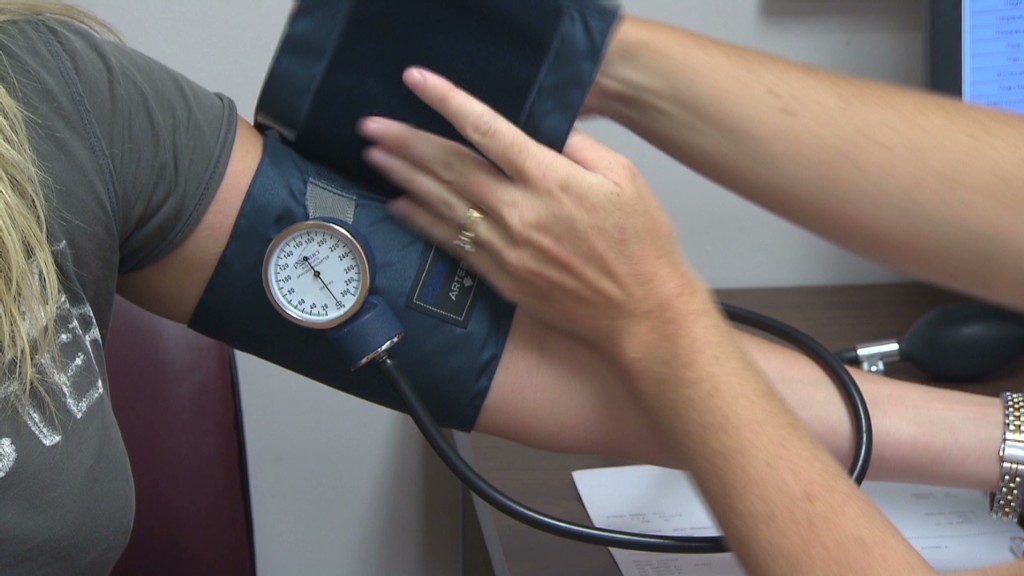
The requirement to buy health insurance is a signature element of Obamacare. But the Affordable Care Act includes plenty of other tax provisions affecting individuals. Here's a look at some of the key ones:
Individual mandate: Starting in 2014, most Americans will be required to buy minimum essential health insurance coverage. If they don't, they must pay an annual penalty to the IRS, known as a "shared responsibility payment."
The penalty will be equal to a specified dollar amount or a percentage of one's household income, whichever is greater.
It starts at $95 per person or 1% of income in 2014; rises to $325 or 2% of income in 2015; then increases to $695 per adult or 2.5% of income in 2016. Thereafter, the penalty will be adjusted for inflation.
Someone who lacks coverage for only part of the year would only pay part of the penalty. But no penalty is due if someone goes without coverage for fewer than 90 days in a year.
People who earn too little to file tax returns and those for whom insurance would eat up more than 8% of their income are exempt, among others.
Related: Taxpayer guide to Obamacare
Premium tax credit: Starting in 2014, most low- and middle-income Americans who buy health insurance on the new state and federal exchanges will be eligible to receive a federal subsidy to defray the cost of their policy premiums.
Anyone making up to 400% of the poverty line qualifies for a subsidy. In 2014, that means any individual making up to $45,960 or a family of four with household income up to $94,200 is eligible.
The less you make, the bigger your subsidy will be.
Medicare surtax on wages and investment income: The law raised the Medicare tax on wages and subjects investment income to a Medicare tax for the first time.
But the changes only affect high-income households.
They will owe another 0.9% on their earned income over $200,000 ($250,000 if married). That's on top of the 1.45% Medicare tax that they currently pay on all of their wages.
For those making more than $200,000 ($250,000 if married) and who have investment income, they also may be subject to a 3.8% tax on at least a portion of their capital gains and dividends.
(Here's more on how the Medicare tax increases will work.)
Higher medical deduction threshold: As a result of the Affordable Care Act, tax filers now may only deduct medical expenses that exceed 10% of their adjusted gross income. Previously, the threshold was 7.5% of AGI.
The new 10% threshold will not apply to people 65 and older until 2016.
Higher penalty on nonqualified Health Savings Account distributions: Any distributions taken from one's Health Savings Account and spent on something other than qualified medical expenses are now subject to a 20% tax, up from 10% previously. That's on top of any ordinary income tax due as a result of adding that distribution back to one's gross income.
For those taking nonqualified distributions from Archer Medical Savings Accounts, the tax increased to 20% from 15%.
Both types of plans require the account holder to purchase high-deductible insurance. They also allow for tax-advantaged contributions to and withdrawals from an investment account.
Related: What businesses need to know about tax changes

Tanning tax: The ACA created a 10% excise tax on indoor tanning services that went into effect in 2010. But there are exceptions. It doesn't apply to "spray-on tanning services, topical creams and lotions or to phototherapy services performed by a licensed medical professional on his or her premises," according to the IRS.
Nor does it apply to "qualified physical fitness facilities" that offer tanning as a service to its members without charging a specific fee.
Lower limit on contributions to tax-advantaged health accounts: The amount that workers may contribute to their flexible spending accounts has been reduced to $2,500, down from $5,000. It will be adjusted for inflation going forward.
The ACA also changed the reimbursement rules for some medical expenses.
